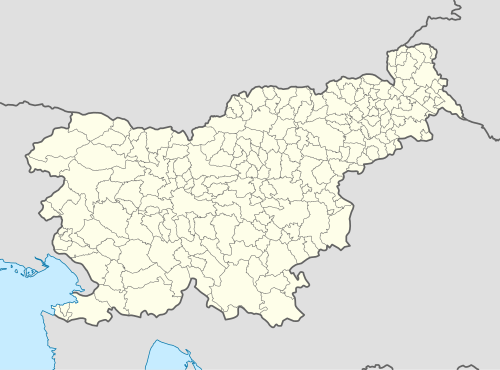Šmartno pri Litiji
| Šmartno pri Litiji Občina Šmartno pri Litiji | |
|---|---|
| Town and Municipality | |
 | |
 Location of the Municipality of Šmartno pri Litiji in Slovenia | |
 Šmartno pri Litiji Location of the town of Šmartno pri Litiji in Slovenia | |
| Coordinates: 46°02′38.7″N 14°50′47.89″E / 46.044083°N 14.8466361°ECoordinates: 46°02′38.7″N 14°50′47.89″E / 46.044083°N 14.8466361°E | |
| Country |
|
| Government | |
| • Mayor | Rajko Meserko |
| Area | |
| • Total | 222.3 km2 (85.8 sq mi) |
| Population (2002)[1] | |
| • Total | 18,470 |
| • Density | 83/km2 (220/sq mi) |
| Time zone | CET (UTC+01) |
| • Summer (DST) | CEST (UTC+02) |
Šmartno pri Litiji (pronounced [ˈʃmaːɾtnɔ pɾi liˈtiːji]; German: Sankt Martin)[2] is a town and a municipality in the Litija Basin in central Slovenia. It is part of the traditional region of Lower Carniola and is now included in the Central Slovenia Statistical Region. The town itself is located 3 km southeast of Litija at the confluence of three creeks: Reka Creek, Black Creek (Slovene: Črni potok), and Kostrevnica Creek (Slovene: Kostrevniški potok). The town of Litija outgrew the formerly more important Šmartno when the Austrian Southern Railway was routed through Litija. The name of the settlement was first attested in ecclesiastical documents from 1135, although the area was already settled in prehistoric times. The oldest house in Šmartno pri Litiji bears the year 1580, and in the 17th century the Mollerey painting and graphic arts workshop operated in it.[3] The town includes the hamlet of Slatina (in older sources also Slatna,[2] German: Slatenegg[2]).
Church
The center of the town is dominated by the neo-Gothic church dedicated to Saint Martin, from which the settlement gets its name (Šent Martin > Šmartno). It belongs to the Roman Catholic Archdiocese of Ljubljana. The church was designed by the architect Adolf Wagner, and was built between 1899 and 1901 on the site of an earlier church mentioned in written documents dating to 1363.[4] The interior of the church is illuminated by light coming through stained-glass windows designed by Anton Jebačin. According to a legend, the church was built on the place where trapped miners in Šmartno were once rescued on Martinmas.
References
- ↑ Statistical Office of the Republic of Slovenia, census of 2002
- 1 2 3 Leksikon občin kraljestev in dežel zastopanih v državnem zboru, vol. 6: Kranjsko. 1906. Vienna: C. Kr. Dvorna in Državna Tiskarna, pp. 94–95.
- ↑ Šmartno pri Litiji municipal site
- ↑ "EŠD 928". Registry of Immovable Cultural Heritage (in Slovenian). Ministry of Culture of the Republic of Slovenia. Retrieved 5 September 2011.
External links
-
 Media related to Šmartno pri Litiji at Wikimedia Commons
Media related to Šmartno pri Litiji at Wikimedia Commons - Šmartno pri Litiji municipal site
- Municipality of Šmartno pri Litiji on Geopedia
